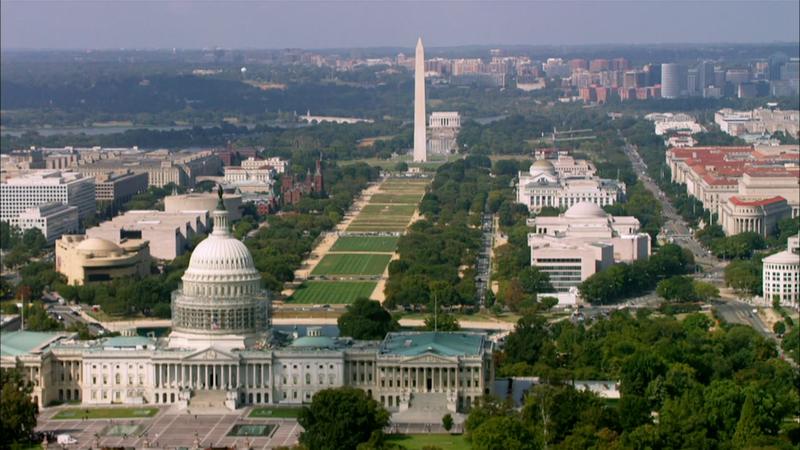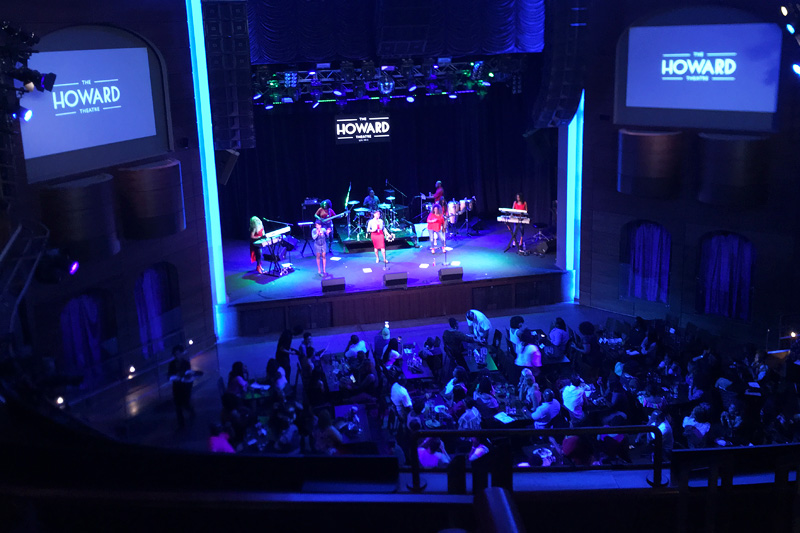
Anyone schooled in the US Punk scene of the late 70’s and 80’s probably knows a thing or two about the significance of Washington D.C. As the U.S. Capital, its influence on the scene as an anti-political voice is an obvious one; local groups and bands from all over the region – especially Maryland, Pennsylvania, even New York – would descend on the city for rallies, festivals and concerts. Minor Threat, Bad Brains, S.O.A. and Scream were amongst the bands to emerge from the period. Iconic musician Dave Grohl (Nirvana, Foo Fighters and at one point, Scream) has often spoken about the scene as paving the way for his career,
When I get on stage at Wembley Stadium, I still feel like I did playing the 9:30 Club. It’s the same energy. It really is. Washington, D.C., and the music scene is the foundation of everything for me.
He also reflects on one fateful Dead Kennedys gig he witnessed on the National Mall in 1983,
There were cops on horses beating the [expletive] out of people. There were police helicopters. . . . To see [Dead Kennedys frontman] Jello Biafra come on and talk about ‘the great Klansman in the sky with the blinking red eyes’ as he pointed at the Washington Monument. . . . It was like my Woodstock.
Today, the music scene in D.C. remains one of the strongest in the U.S.; though perhaps with less visible, concentrated influence. One of the venues that was considered at the heart of that influence, The 9:30 Club, is easily the most iconic venue of its size in the region – in fact it’s the most attended venue of its capacity (about 1,200) in the world. A quick look at its website will show you why – it has shows of all genres every night of the week.
While I was in DC in June, the venue hosted soulful English singer Michael Kiwanuka, Australian outfit The Avalanches and UK rockers Royal Blood over three consecutive nights. I caught the last of those three shows and was struck by the venue’s sound and layout – they really have perfected their room, which was built on its current site in 1996. The 9:30 Club you’ll read about in books like This is a Call is no more, but locals tell me it carries the same weight and spirit of the original location, which first opened in 1980, holding only 199 patrons.
.@royalblooduk has us hooked, lined & sunk tonight! #RoyalB930 pic.twitter.com/XrfwpWs7xQ
— 9:30 Club (@930Club) June 7, 2017
And from The 9:30 Club grew something of an empire; a range of venues around the city which the club owns, books and/or operates under the I.M.P. umbrella. There’s the Lincoln Theatre, four blocks away, one of the most historically significant venues in the city. A 1,200 capacity room for seated comedy and music performances, it was initially built as a part of “Black Broadway” in 1922, which coincided with the Harlem Renaissance, spearheaded by local musician Duke Ellington. The venue closed in 1968, after the post-MLK jr death riots – but when the metro opened across the street in 1991, interest grew again, and the venue was reborn. Though the building is technically owned by the city, I.M.P. have been booking the venue for a few years now.
The nearby Howard Theatre is also a historic part of D.C.’s “Black Broadway”. Established in 1910 and recently refurbished, the room has a mix of seating and standing, and like the 9:30, offers a mix of genres and performances in its long standing walls. Keeping true to its traditions, I caught a Go-Go band for the “Go-Go brunch” called Be’la Dona, performing on a Sunday afternoon. A quick look at their upcoming shows will see the likes of Talib Kweli, UB40 and George Clinton & Parliament Funkadelic among the acts set to appear soon.

While talking venues, it’s impossible not to mention the most well known in the city: The Kennedy Center. You’re unlikely to see the latest punk rock band doing their thing here, but the building, which opened in 1971, offers a wide array of performances across its three rooms: the 1k capacity Eisenhower room, the 2100 capacity Opera House and the 2300 capacity Concert Hall. And though only acts of a certain calibre will play in its main rooms, in its foyer – which is free to enter and open to guests from 10am to Midnight, 365 Days a year – you’ll find the Millennium Stage, which holds free performances at 6pm every day, sitting underneath what is, architecturally, one of the largest interiors in the world (the high ceilings immediately giving this away)! Everything from live podcasts to DJs to Thao and The Get Down Stay Down, members of the NSO, comedy, jazz and more have performed there in recent weeks. And look out for more performance opportunities as the venue expands in 2018.
Though I.M.P. doesn’t operate the Howard, nor the Kennedy Center, elsewhere around the city you’ll find several other venues they produce and promote, from the National Mall to the Echostage, while the fourth venue that makes up their group is the Merriweather Post Pavilion in nearby Columbia, Maryland (yes, the venue after whom Animal Collective named their album). And even Dave Grohl co-owns a venue here – the Black Cat. A 700 capacity room which gives plenty of bands their start, the room holds onto the traditions of the city as a place where music can flourish, especially in the modern political age.
But perhaps the city’s most exciting venue is still to come. In the new billion dollar “District Wharf” project, 9:30 are set to open their most ambitious venue yet: The Anthem. The 6,000 capacity room will be opening on October 12th with none other than Dave Grohl’s Foo Fighters headlining the night. Artists like LCD Soundsystem, Primus and Queens of the Stone Age with Royal Blood have also confirmed appearances before the year is out. It has been built specifically for music from the ground up, with set ups available for between 2500 (when fully seated) and 6k (when almost fully standing) audiences – numbers which really hadn’t been catered to in the D.C. until now, especially for contemporary music (though expect music from all eras to be covered here). The venue, which I visited as it was still under construction in June, reminds me of Terminal 5 in New York – an industrial feel (possibly temporary), with a high ceiling, three levels of standing and seating, and a similar capacity.

But it’s what surrounds the venue is makes it particularly ambitious: no less than 501 units surround the venue, with an egg-like enclosure serving to separate the venue from the units, and essential to the design. “The soundproofing of the venue will be a big story”, one representative told me. But with 6k people descending on the stage many nights, I wouldn’t be surprised if people purchased property and turned it into an Airbnb – stumble upstairs as soon as your gig is finished is a pretty good selling point! Though there are plenty of hotels that will be serving the guests across the Wharf. There’s going to be an Intercontinental Hotel, the first Canopy by Hilton outside of Iceland, and 25 different restaurants will sit along the promenade. There’ll be a free stage set up on a new wharf, too, and water taxis will be able to dock right in front of the venue.

The design hasn’t let practicality get in the way of grandeur, either – a glass pool will sit above the lobby of the theatre, three stories high. There are no doors to let you in and out of the space, it’s all open planned. There’s an outdoor balcony on the second level, and a band could perform on the marquee. The stage can be moved forward 40 feet to make the show more intimate, which is similar to how they operate the 9:30, and all but 10% of the seats can be removed. Seven bars will operate through the venue, there’ll be box seating on two levels, most events will be all ages and some of those permanent seats will be marketed as “super excellent seating”, with premium ticket pricing at most performances.
If Anthem represents the future of the D.C. Music scene, it seems that this won’t just be a city that influences the taste of a country – and even the world – but also the design of its venues. Can you imagine a theatre like Anthem being placed in future apartment projects around the world, without the worry of sound bleed and the other restrictions that keep venues out of residential areas? Cities like Sydney, who choose to force venues to close down rather than work with architects to create environments where entertainment and accomodation can co-habitate, should take note: If a city like D.C., steeped in both political pomp and musical tradition, from the 80’s punk scene to the orchestras who play in the Kennedy Center’s hallowed walls, can encourage a city that feels more musically vibrant than ever, then any city can.
For more on The Anthem, head to theanthemdc.com
Dave Grohl quote from Washington Post.
